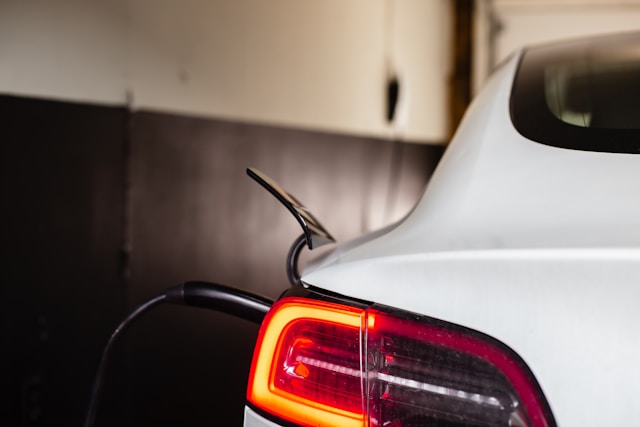
Looking to install an EV charger at home? You’re in the right place! Navigating the best tools for the job can be tricky without expert guidance or the right equipment.
From precision testers to durable mounting hardware, we’ve got you covered. Discover top tools that ensure safe, efficient installations every time.
For professional support, trust The Local Electrician. Their expertise guarantees your setup is seamless and reliable, so you can charge with confidence.
Essential EV Charging Levels
Getting into EV charger installation starts with understanding the different charging levels available. Let’s break down what each level means for your setup process.
Level 1 Charging
Starting with the basics, Level 1 charging uses a standard 120-volt outlet. It’s the slowest option, perfect for overnight charging at home.
Level 2 Charging
Moving up, Level 2 chargers operate on 240 volts, cutting charging time significantly. They’re ideal for home or small business installations with faster needs.
Level 3 Charging (DC Fast Charging)
Lastly, Level 3, or DC fast charging, delivers high-speed power directly to the battery. It’s mainly for commercial or public stations due to cost.
Key Connector Types Explained
Navigating EV charger installation means knowing the connector types. Different regions and vehicles use specific plugs, so let’s explore the main ones together.
SAE J1772 (Type 1)
Common in North America, the SAE J1772 connector handles Level 1 and 2 charging. It’s a five-pin plug with up to 19.2 kW output.
Mennekes (Type 2)
Over in Europe, the Mennekes Type 2 connector rules with seven pins. It supports up to 22 kW and features an automatic locking mechanism.
CCS (Combined Charging System)
Then there’s CCS, combining AC and DC charging. It’s a fast-charging standard in North America, delivering up to 360 kW for quick turnarounds.
CHAdeMO Connector
Don’t forget CHAdeMO, a DC fast-charging option popular with Japanese EVs. It’s losing ground to CCS but still relevant in some markets.
Cost to Install Breakdown
Installing an EV charger comes with costs that vary widely. Let’s dive into the factors that’ll impact your budget during this setup journey.
Charger Type Costs
First off, Level 1 chargers cost between $300 and $1,000, while Level 2 units range from $700 to $1,800 for home use.
Installation Expenses
Labor and installation can add $1,000 to $2,500 to your total. Hardwired setups often cost more due to complex electrical work required.
Additional Accessories
Accessories like surge protectors or mounting brackets might sneak into your expenses. These extras can push costs up by a few hundred bucks.
Permits and Ongoing Fees
Don’t overlook permits, which vary by region, or ongoing fees for cloud services. These can add small but notable amounts to your budget.
Household Circuit Output Basics
Before installing an EV charger, check your household circuit output. Knowing your home’s electrical capacity ensures a safe and efficient charging setup.
-
- Standard Voltage: Most homes have 120-volt outlets for Level 1 charging, which is fine for slow, overnight charging of smaller EV batteries.
-
- Upgraded Circuits: For Level 2 chargers, a 240-volt circuit is needed, often requiring an electrician to upgrade your panel or wiring.
-
- Breaker Capacity: Ensure your breaker box can handle the added load, as overloading can cause trips or safety hazards during use.
Getting a handle on these basics prevents costly mistakes. Assess your home’s setup or consult a pro to confirm everything’s ready for installation.
Fluke 1587 FC Multimeter
For EV charger installation, the Fluke 1587 FC Multimeter is a game-changer. It helps diagnose electrical issues wirelessly with Fluke Connect technology.
-
- Safety First: Monitor test measurements remotely, keeping yourself out of harm’s way while working on high-voltage EV charging systems.
-
- Quick Diagnostics: Identify insulation resistance problems fast, ensuring your installation meets safety standards without delays or guesswork.
-
- Wireless Sharing: Share results with your smartphone, making it easy to document and communicate job completion to clients or team members.
This tool streamlines your workflow significantly. With its precision and connectivity, tackling complex installations becomes less daunting and far more efficient.
Fluke 1630-2 FC Clamp
Another must-have for EV charger installs is the Fluke 1630-2 FC Earth Ground Clamp. It ensures grounding systems are up to par.
-
- Hard-to-Reach Testing: Test grounding in tight or paved spaces without needing auxiliary stakes, perfect for urban EV charger setups.
-
- Leakage Detection: Identify AC leakage current without disconnecting ground stakes, saving time and maintaining system integrity during installation checks.
-
- Data Logging: Store up to 32,760 measurements, allowing you to track and analyze grounding performance over time for reliable reporting.
Having this clamp in your toolkit boosts confidence. It’s rugged, accurate, and simplifies grounding tests in challenging installation environments.
Fluke 500 Series Analyzer
When precision matters, the Fluke 500 Series Analyzer steps up for EV charger installations. It’s tailored for testing EVSE systems thoroughly.
Power Quality Testing
This analyzer checks power quality, ensuring your charger operates without disruptions from voltage fluctuations or harmonic distortions in the electrical supply.
EVSE Commissioning
Use it to commission new chargers, verifying that all systems meet specs before they go live for public or private use.
Routine Maintenance
For ongoing maintenance, it helps spot issues early, preventing downtime and ensuring your chargers stay reliable over the long haul.
Detailed Reporting
Generate detailed reports with ease, providing clients with clear data on charger performance and compliance during or after installation projects.
Selecting the Right Level
Choosing the right charging level for installation is crucial. Consider your client’s needs, location, and budget to make the best decision.
Assess Usage Needs
Start by evaluating how often the charger will be used. Daily drivers might need Level 2 for faster charging at home.
Location Factors
Think about where the charger goes. Residential setups often stick with Level 1 or 2, while public spots may require Level 3.
Budget Constraints
Keep costs in mind. Level 1 is cheapest upfront, but Level 2 or 3 could save time and money long-term for frequent users.
Future-Proofing
Plan ahead for EV advancements. Installing a higher level now might prevent costly upgrades as vehicle technology and demand evolve.
Licensed Electrician Collaboration Tips
Teaming up with a licensed electrician for EV charger installs is often necessary. Here’s how to make that partnership smooth and effective.
-
- Clear Communication: Discuss project goals and timelines upfront to ensure everyone’s on the same page regarding installation specs and deadlines.
-
- Code Compliance: Rely on their expertise to meet NEC requirements, avoiding legal or safety issues during residential or commercial setups.
-
- Task Division: Split responsibilities based on skills, letting them handle complex wiring while you focus on charger mounting or client coordination.
Working together saves headaches down the line. A good collaboration ensures installations are safe, compliant, and completed on time every time.
Power Up Confidently
Equip yourself with the right tools and knowledge for installing an EV charger. Collaborate with licensed electricians, select appropriate levels, and ensure safe, efficient setups. With these insights and top tools, you’re ready to charge ahead, making sustainable driving a seamless reality for your home or business.
